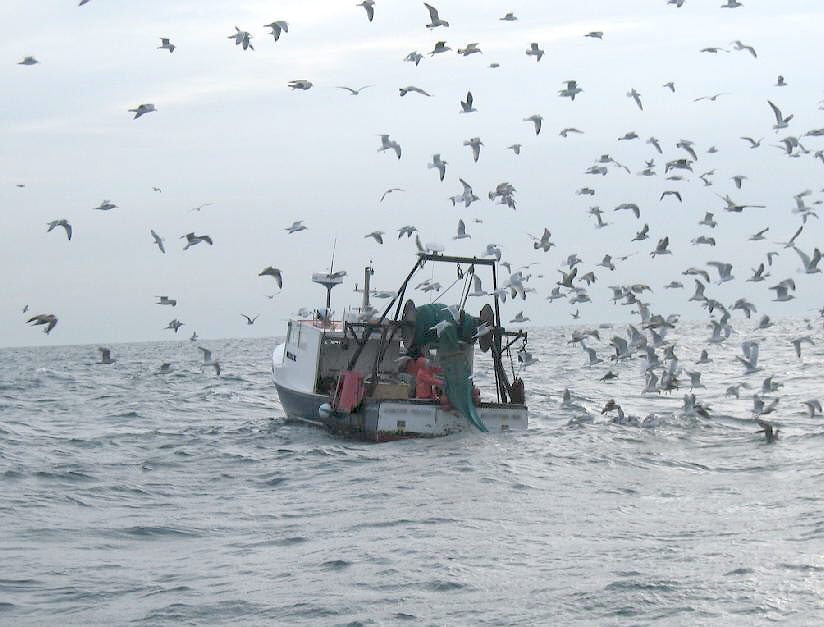Fish are a most renewable resource. The potential is great for US fishermen to provide the world with quality seafood – if we manage our fisheries well.

Haul back – photo by P. He
One hundred years ago agriculture had tamed the American frontier but was relatively unsophisticated. Then came the Green Revolution as farmers, working with scientists, developed modern farming techniques. Farm productivity increased a thousand-fold. In years to come we will see similar gains in commercial and recreational fisheries. The American fishing industry is on the brink of a new era, though there is still a long learning curve ahead.
Georges Bank catch
The Northeast Region is a proving ground for this “revolution” in fisheries. The waters from Cape Hatteras, NC to the Gulf of Maine are one of the best studied marine ecosystems in the world. We have great marine science institutions. And though our fishing communities have suffered years of economic turmoil, the people who remain in the business are resilient, resourceful and creative.
A new breed of fisherman is emerging – one as likely to carry a laptop to the boat in the morning along with his foul weather gear. In a sustainable fishery information is essential. Good management starts with choices made in the wheelhouse and on the pier.
Sustainable fishing is more than simply catching fish. It is about creating seafood quality through value-added or value-preserved. It requires comprehensive planning which gets the balance of incentives right so that when a fishing vessel leaves the dock, the captain is targeting the greatest dollar value of landings with the least environmental impact and cost.
Sustainable fishing strategies have many moving parts that have to function as a whole. The elements are as varied as fishing gear design and vessel economics, to information management systems, to seafood marketing. John Williamson has a proven track record in multi-facetted planning for sustainable resource use, with the background and skills needed to build consensus and foster innovation. His professional commitment is toward responsible development of marine fisheries and consumer education.
Gillnetter hauling nets
New England’s once depleted fish populations are on the road to recovery. New Englanders who love fresh, quality seafood have a stake in how well our fisheries are managed. Support local fishermen who practice sustainable fishing. Here are some things to look for:
Gloucester highliners
- The fishery is under a conservative management plan where scientists set catch limits and all catch is accounted for.
- The fishermen use “selective” fishing gears which only catch what they want to catch.
- The fishery as a whole avoids harm to marine mammals, birds and other sea creatures. It has a low ecological “footprint”.
- The vessels in the fishery are reducing energy consumption through adaptive fishing strategies and information-sharing.
The purpose of this website is to promote wise use of our ocean resources. Please take a moment to share your comments or questions on sustainable seafood. I hope you enjoy locally-caught seafood as much as I do! If you are interested in buying locally-caught fish directly from the source, drop me a note (below) and I can refer you to fishermen taking a creative approach.